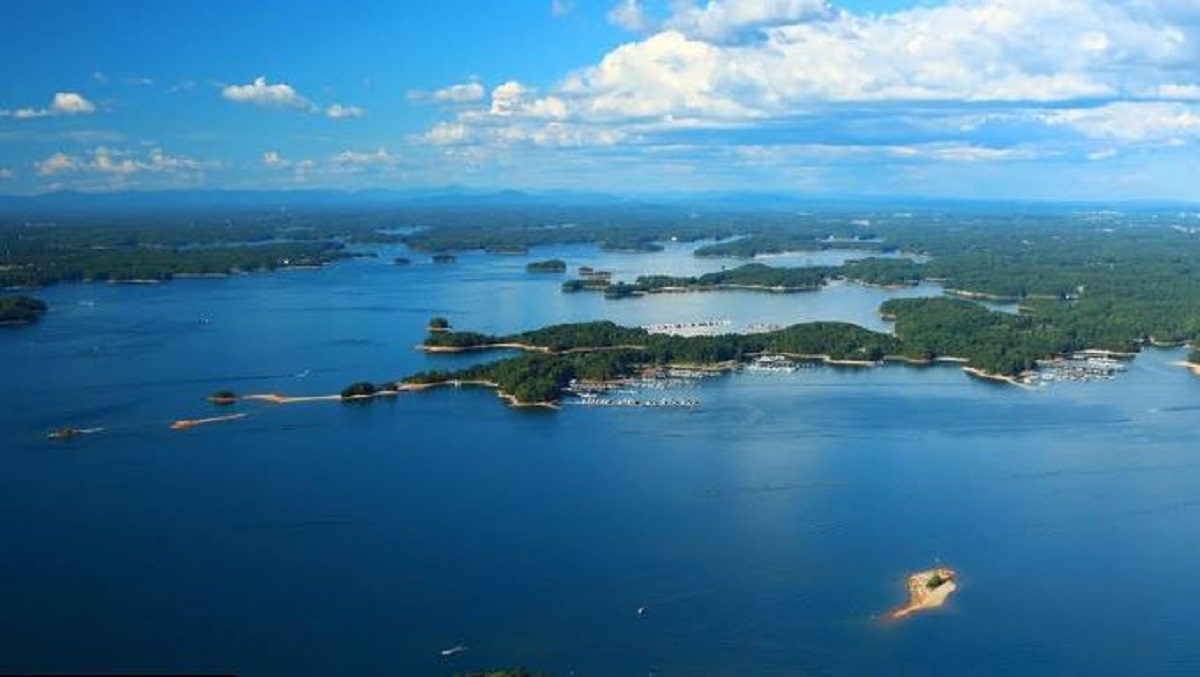Aside from being a great place to have fun outdoors outside Atlanta, Lake Lanier is one of the top bodies of water in Georgia. It also happens to collect bodies under the water.
The lake, located in a reservoir located in North Georgia, draws thousands of visitors a year and its nearly 700 miles of shoreline and 100 small islands are a needed respite during the Georgia summers. But as beautiful as the waters are, Lake Lanier has a dangerous reputation.
The lake claims at least one fatality each year, according to news reports in recent years. While the vast majority of these deaths are unfortunate accidents, there has been a growing buzz on online forums and social media that the lake’s past may not be as pristine as its waters.
Lake Lanier: A History
Lake Lanier was created in the 1950s as part of a large-scale water management project known as the Buford Dam Project. The construction of the dam and the creation of the lake were authorized by the U.S. Congress in 1946, and the project was undertaken by the U.S. Army Corps of Engineers.
The primary purpose of the project was to provide hydroelectric power, flood control, navigation, and water supply to the city of Atlanta and its surrounding areas. The construction of the dam began in 1950, and it took six years to complete. The dam was named after Congressman Carl Vinson’s hometown of Buford.
How Deep Is Lake Lanier?
Lake Lanier is 160 feet deep when it is full. The deepest spot is the Buford Dam’s north side, which is situated about 911 feet above sea level.

Where is Lake Lanier Located?
Lake Lanier is located in North Georgia about 50 miles from downtown Atlanta. The lake touches four surrounding five counties: Dawson, Forsyth, Gwinnett, Hall and Lumpkin. Here is a map to help you find it.
When Was Lake Lanier Built?
Here is a timeline of the major events related to the construction of Lake Lanier in Georgia:
- 1946: The U.S. Congress authorizes the construction of Buford Dam on the Chattahoochee River for the purposes of hydroelectric power, flood control, navigation, and water supply.
- 1950: Construction of the dam begins.
- 1953: The town of Oscarville, located in the area that will be flooded by the lake, is evacuated and abandoned.
- 1956: The construction of Buford Dam is completed, and the lake begins to fill.
- 1957: The lake is officially dedicated, and it is named Lake Sidney Lanier in honor of Sidney Lanier, a 19th-century poet and musician from Georgia.
- 1958: The lake reaches its full pool level of 1,071 feet above sea level.
- 1962: The U.S. Army Corps of Engineers completes construction of the Buford Dam Powerhouse, which generates hydroelectric power from the flow of water through the dam.
- 1966: The Corps of Engineers begins construction of a new dam downstream of Buford Dam, called the Lower Buford Dam, which is intended to provide additional flood control and water supply capacity.
- 1970: The Lower Buford Dam is completed, and it is combined with the original dam to form a single structure.
Since its completion, Lake Lanier has been managed by the U.S. Army Corps of Engineers, and it has become a popular recreational destination, as well as a vital source of water supply and power generation for the region.
Was Lake Lanier Built On Top of Oscarville, Ga.?
Lake Lanier in Georgia was not built on top of Oscarville, but rather, the construction of Buford Dam, which created the lake, flooded the area where the historic town of Oscarville was located.
Oscarville was a small community established in the early 1800s, located at the confluence of the Chattahoochee and Chestatee Rivers. The town had a population of around 40 people at its peak, and it was an important center of commerce and trade in the area.
However, the construction of Buford Dam required the flooding of the land around the town, including several other communities and historic sites.
The creation of the lake required the relocation of several thousand people, and entire communities were displaced. The construction of the dam also flooded several historic sites, including the town of Oscarville, which was established in the 1820s and was one of the earliest settlements in the area.
The U.S. Army Corps of Engineers, which was responsible for the construction of the dam and the creation of the lake, bought out the property owners and relocated the residents of the affected communities.
Why Is Lake Lanier So Dangerous?
Lake Lanier has gotten a reputation for being dangerous because of the frequent deaths that have taken place, but that’s not the whole story.
The U.S. Army Corps of Engineers, which manages the lake, has taken steps to improve safety, including implementing boating safety education programs, increasing law enforcement patrols, and improving signage and warning systems. However, accidents and fatalities continue to occur, and visitors are advised to exercise caution and follow all safety guidelines and regulations while enjoying the lake.
How Many Deaths Have Occurred At Lake Lanier?
The number of deaths that have occurred at Lake Lanier in Georgia is difficult to determine precisely, as there is no comprehensive record of such incidents. However, according to news reports and various online sources, there have been a significant number of fatalities and accidents at the lake over the years.
In fact, Lake Lanier has been the site of many tragic incidents, including boating accidents, drownings, and other water-related accidents. According to a report by the Atlanta Journal-Constitution in 2018, at least 160 people had died on the lake since 1994. These incidents have included drownings, boating accidents, and other tragedies, and they have sparked concerns about safety and the need for greater regulation and oversight of activities on the lake.
Final Word
Today, Lake Lanier covers the area where Oscarville and several other communities once stood. Although the town itself is now submerged, efforts have been made to preserve and commemorate its history, including the establishment of the Oscarville Historic District, which recognizes the significance of the town and its impact on the local area.




